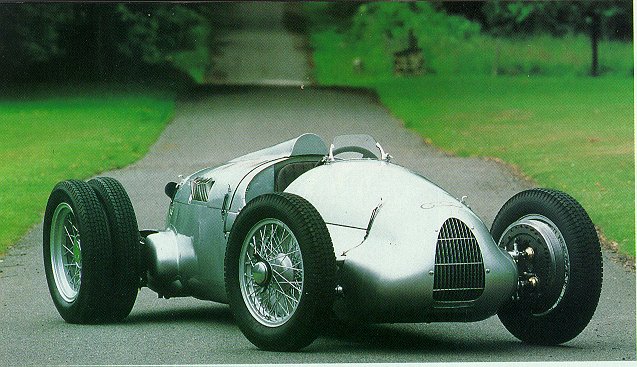
 Auto Union, Typ C
Auto Union, Typ C


This is the so called "The Silverarrow from Swickau"
How it all started
The economic expansion of the 1920's came to a sudden halt with the Wall Street Crash of 1929. For Ferdinand Porsche, Technical Director at Steyer this meant being laid off after less then one year with the Austrian company. Porsche had by this time built a large reputation as an automotive engineer to go along with his equally large ego. Unemployment should have been a temporary setback but Porsche insisted that any job offer need to be accompanied with a seat on the Board of Directors. Unable to find a company willing to meet his demands he decided to set up his own company. With the financial backing of Adolf Rosenberger, Porsche started his company with some former co-workers. Most prominent amongst his new employees was his Chief Designer Karl Rabe. The role of Karl Rabe in the design of the Auto Union has been often overlooked but should not underestimated. Rabe and Porsche formed a strong partnership in the early years. Because of the economic situation business was hard to come by and months would pass between commissions. In 1932 Porsche anxious not to let his financial difficulty stunt his aspirations, decided to design a new racing engine without any confirmed customers! He established another company called Hochleistungs Motor GmbH (High Efficiency Engines Ltd.) In 1932 Auto Union was formed, comprising struggling auto manufacturers Audi, DKW, Horch and Wanderer. The Chairman of the Board of Directors, Baron Klaus von Oertzen felt that what was needed was a showpiece project that would bring fame to his new firm. Porsche had done some work for Wanderer and was commissioned to design a new racing car. Hans Stuck one of Germany's most successful racing drivers had met Adolf Hitler before he came to power so the three of them, Stuck, Baron Oertzen and Porsche went to meat the new Chancellor. Hitler, at the Berlin Motor Show had promised to boost the German car industry. This would involve a new "people's car" and also a government sponsored racing program. Initially 500,000 Reichmarks was pledged to Mercedes-Benz but Porsche was able to convince Hitler that two programs were better than one, and the 500,000 RM would be split by the two competing firms. Mercedes could not be pleased at the turn of events and on this note the great rivalry began. It would not be an exaggeration to state that some members of each German company was more interested in beating the other than the Italians.
Back to The Garage




